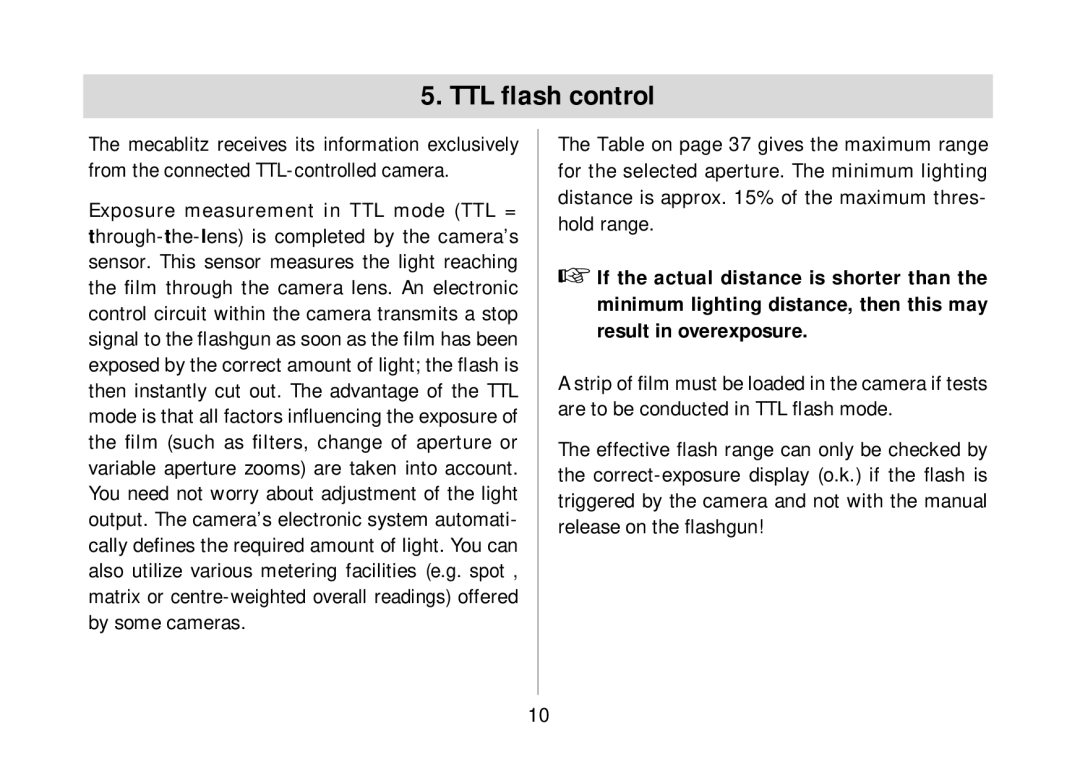
5. TTL flash control
The mecablitz receives its information exclusively from the connected
Exposure measurement in TTL mode (TTL =
The Table on page 37 gives the maximum range for the selected aperture. The minimum lighting distance is approx. 15% of the maximum thres- hold range.
☞If the actual distance is shorter than the minimum lighting distance, then this may result in overexposure.
A strip of film must be loaded in the camera if tests are to be conducted in TTL flash mode.
The effective flash range can only be checked by the
10
